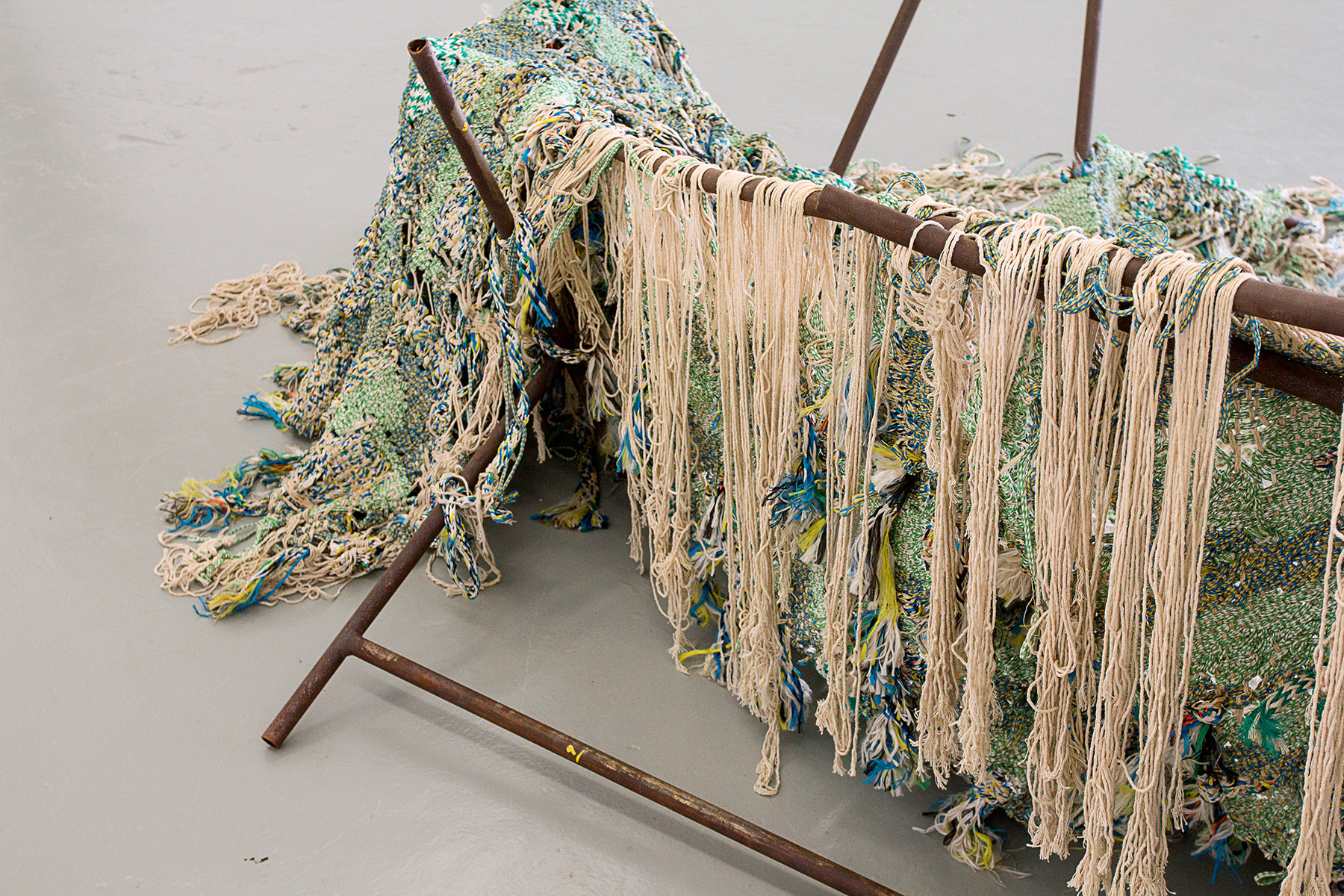
IGSHAAN ADAMS
The second installment in Perspectives features artist Igshaan Adams who talks to us about his show “Oorskot,” currently on view at Blank Projects in Cape Town.
As you said the other day when I visited your studio, you said that you have got bored of making flat squares on the wall, and you were looking for a solution to take your work into a more three dimensional scope, maybe as an introduction can you give us a talking point through that…
Well, for about a year and a half I’ve been weaving these tapestries, and they all ended up in a square and rectangular shapes, so in that process all these mistakes happen, these different mistakes that you think can be developed and forms that I really want to develop further, so after the last body of work of tapestries, the intention was to see what happens when they didn’t have a space, I tried to find someone who I’d like to collaborate with, there was potentially someone in London whose forms I’d seen, and I thought it would be beautiful to turn those forms of hers into looms and then weave into them, kind of creating skins, but logistically it was impossible because of her being in London.
So Jared (Ginsberg) mentioned “well what about Kyle (Morland)” you know he is right here and I had never even thought about him as an option, or even if he would be interested, so he immediately said yes.
Now collaboration has not necessarily been a defining feature of your work, but you’ve never shied away from it, how do you find that process, working with artists, getting feedback?
It’s the first time I’ve worked with another artist on an equal basis to be honest with you, I’ve called it collaboration before but, I don’t know if it was fully collaboration because it was always my family members, and they are not artists, so the conceptual side would always come from me, certainly I would leave a space open for them to at least have some kind of input, but with Kyle it was a bit different, I didn’t want to overshadow. His forms and his structure are still very present, and I thought it was strong enough for me to inhabit.
Just as we speak further about going 3D, I’m interested in the content of the tapestries…I know you used prayers translated into shapes on the surfaces.
I’ve kind of walked the journey (I hate to use that word) with Islam. I was born Muslim in a christian home and then left, didn’t want anything to do with the religion. I wanted to be gay, and I couldn’t do both. Then things just kept changing and at some point I felt a bit of a distance, so the starting point of the prayers was my yearning to go back to the origins of Islam. So in all the prayers, you’ll notice, I went back to the first prayers in the Qur’an, back to the first prayer I was ever taught, the first prayer I ever taught myself as an adult wanting to engage more with Islam and wanting to know more. So there was a desire underneath it that pushed me to all these prayers, they all meant something to me…
I think for any Muslim also, whatever’s happening in the world and I try for it not to, it does affect you. So one of the prayers I focused on was “Al Kafirun” or The Unbeliever, where very beautifully the Qur’an says oh you non-believer, you have your way, I have my way, your way will never be my way, and my way will never be your way, but to each is his own way, we both have our separate ways. I know there are people with a different interpretation of that, but you have to look at the context, when the prayer was revealed to the Prophet Muhammad and whatever was going on there. For me it’s very simply a beautiful confirmation that there’s room for my belief, versus other peoples’…
You’ve always said that your mats and weaves can be read from either side…
Exactly, that’s important for me too. The one side is illegible, or sometimes on both sides. What happens in the weaving process, to the actual letters, and often the way that I’ve used the actual material itself, with the intention of abstracting these, so even someone who reads arabic and understands, will battle to read it…
So this abstraction thing I feel also is my relationship to Islam, because I don’t speak arabic, I understand certain parts and certain phrases, and the prayers that I do now have a collection of carpets of, are the prayers that I’ve put effort into making sure I understand each of the lines when I say it, so that the meaning becomes felt…
Read the full interview HERE
